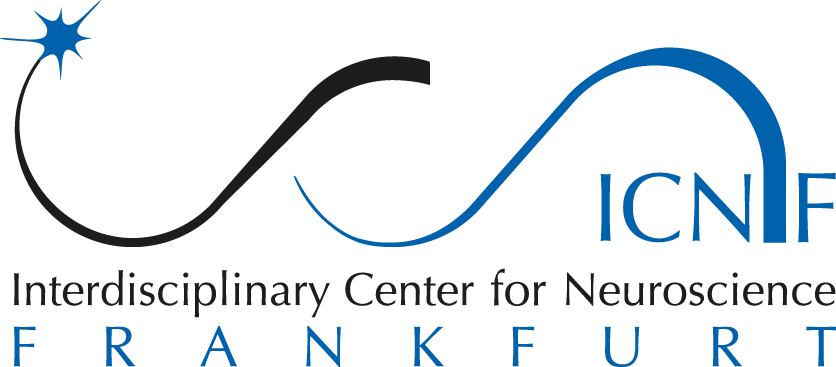Scientific Focus
– Metabolic alterations in malignant glioma
– Signal transduction
– Hypoxia-induced cell death
Methods
– Metabolic analysis (consumption of oxygen and glucose, production of lactate)
– Cell death analysis (LDH-release, flow cytometry, apoptosis assays)
– Molecular analysis (quantitative RT-PCR, reporter assays)
Selected Publications
Burger MC, Forster MT, Romanski A, Straßheimer F, Macas J, Zeiner PS, Steidl E, Herkt S, Weber KJ, Schupp J, Lun JH, Strecker MI, Wlotzka K, Cakmak P, Opitz C, George R, Mildenberger IC, Nowakowska P, Zhang C, Röder J, Müller E, Ihrig K, Langen KJ, Rieger MA, Herrmann E, Bonig H, Harter PN, Reiss Y, Hattingen E, Rödel F, Plate KH, Tonn T, Senft C, Steinbach JP, Wels WS. Intracranial injection of natural killer cells engineered with a HER2-targeted chimeric antigen receptor in patients with recurrent glioblastoma. Neuro Oncol. 2023 Nov 2;25(11):2058-2071. doi: 10.1093/neuonc/noad087. PMID: 37148198; PMCID: PMC10628939.
Strecker MI, Wlotzka K, Strassheimer F, Roller B, Ludmirski G, König S, Röder J, Opitz C, Alekseeva T, Reul J, Sevenich L, Tonn T, Wels WS, Steinbach JP, Buchholz CJ, Burger MC. AAV-mediated gene transfer of a checkpoint inhibitor in combination with HER2-targeted CAR-NK cells as experimental therapy for glioblastoma. Oncoimmunology. 2022 Oct 11;11(1):2127508. doi: 10.1080/2162402X.2022.2127508. PMID: 36249274; PMCID: PMC9559045.
Platten M, Bunse L, Wick A, Bunse T, Le Cornet L, Harting I, Sahm F, Sanghvi K, Tan CL, Poschke I, Green E, Justesen S, Behrens GA, Breckwoldt MO, Freitag A, Rother LM, Schmitt A, Schnell O, Hense J, Misch M, Krex D, Stevanovic S, Tabatabai G, Steinbach JP, Bendszus M, von Deimling A, Schmitt M, Wick W. A vaccine targeting mutant IDH1 in newly diagnosed glioma. Nature. 2021 pr;592(7854):463-468. doi: 10.1038/s41586-021-03363-z. Epub 2021 Mar 24. PMID: 33762734; PMCID: PMC8046668.
Ronellenfitsch MW, Harter PN, Kirchner M, Heining C, Hutter B, Gieldon L, Schittenhelm J, Schuhmann MU, Tatagiba M, Marquardt G, Wagner M, Endris V, Brandts CH, Mautner VF, Schröck E, Weichert W, Brors B, von Deimling A, Mittelbronn M, Steinbach JP, Reuss DE, Glimm H, Stenzinger A, Fröhling S. Targetable ERBB2 mutations identified inneurofibroma/schwannoma hybrid nerve sheath tumors. J Clin Invest. 2020 May 1;130(5):2488-2495. doi: 10.1172/JCI130787. PMID: 32017710; PMCID: PMC7190903.
Herrlinger U, Tzaridis T, Mack F, Steinbach JP, Schlegel U, Sabel M, Hau P, Kortmann RD, Krex D, Grauer O, Goldbrunner R, Schnell O, Bähr O, Uhl M, Seidel C, Tabatabai G, Kowalski T, Ringel F, Schmidt-Graf F, Suchorska B, Brehmer S, Weyerbrock A, Renovanz M, Bullinger L, Galldiks N, Vajkoczy P, Misch M, Vatter H, Stuplich M, Schäfer N, Kebir S, Weller J, Schaub C, Stummer W, Tonn JC, Simon M, Keil VC, Nelles M, Urbach H, Coenen M, Wick W, Weller M, Fimmers R, Schmid M, Hattingen E, Pietsch T, Coch C, Glas M; Neurooncology Working Group of the German Cancer Society. Lomustine-temozolomide combination therapy versus standard temozolomide therapy in patients with newly diagnosed glioblastoma with methylated MGMT promoter (CeTeG/NOA-09): a randomised, open-label, phase 3 trial. Lancet. 2019 Feb16;393(10172):678-688. doi: 10.1016/S0140-6736(18)31791-4. Epub 2019 Feb 14. PMID: 30782343.

